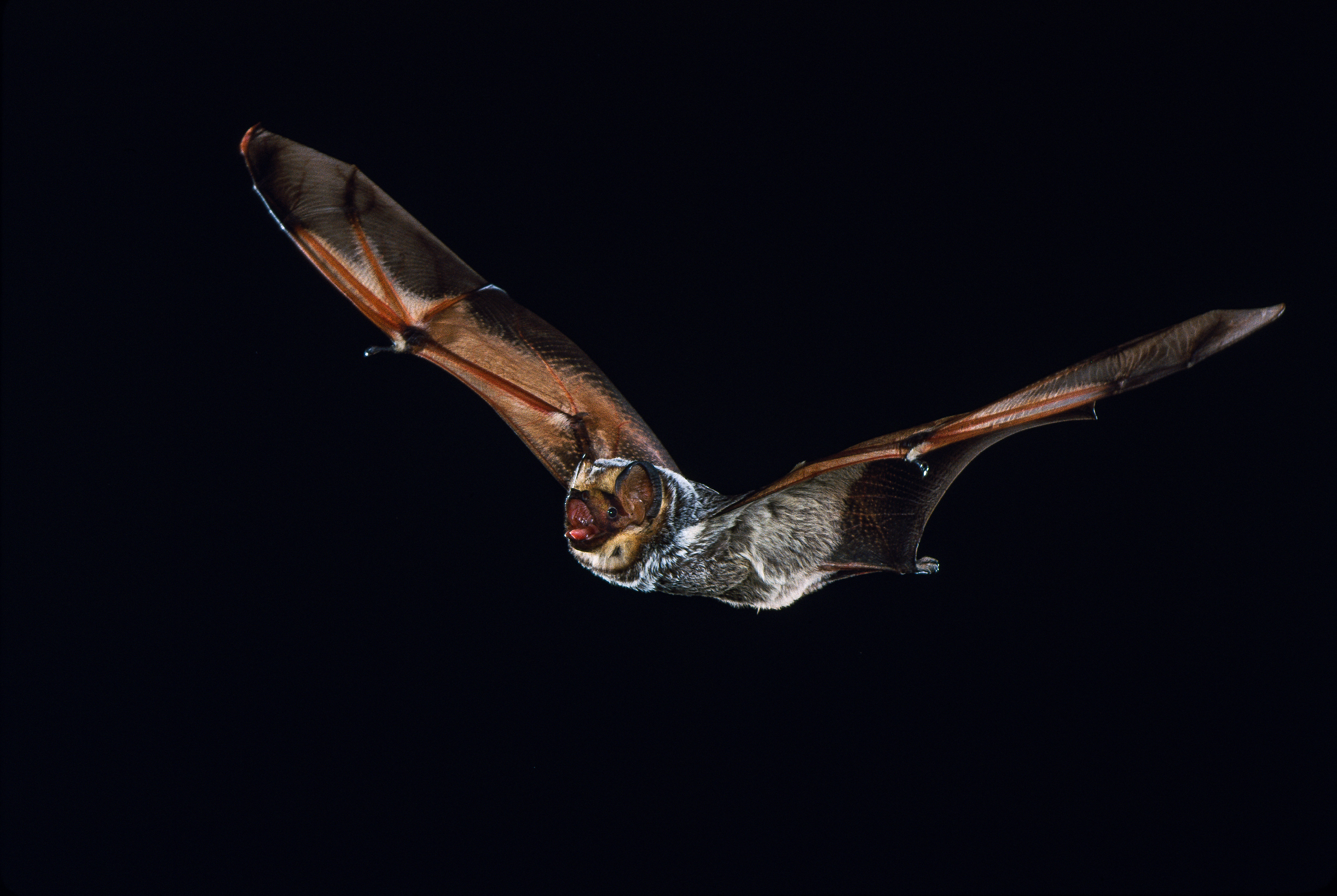Bat Smart Curtailment Suitability Assessment and Modeling
In the US, two mitigation methods have proven to reduce bat fatalities by wind turbines: standard curtailment (see Arnett et al.2008) and smart curtailment (see Sutter et al.2017). The rather discouraging results from recent deterrents tests (Table 1) suggest these may continue to be the only fatality minimization options for the foreseeable future.

Table 1. Summary of results from three acoustic deterrent studies conducted during 2017
|
Study name and (state) |
Summary |
|
BWEC/DOE (OH) |
Ineffective in reducing overall bat fatalities Ineffective in reducing fatalities for any single species Increased fatalities for eastern red bats |
|
NRG/DUKE (TX) |
Ineffective in reducing overall bat fatalities Effective in reducing fatalities for Brazilian free-tailed bats only Increased fatalities for eastern red bats |
|
GE/INVERNEGY (IL) |
Effective in reducing overall bat fatalities Effectiveness for individual species was not reported Increased fatalities for eastern red bats |
Both curtailment strategies pitch out wind turbine blades to reduce rotation rates to ~2 rpm, andboth are shown to be effective in reducing bat fatalities. Smart curtailment has the added benefit of being the only strategy that significantly reduces fatalities of Myotisspecies. The strategies differ in their effect on energy yield. Standardcurtailment typically has a larger negative effect on energy yield because curtailment is determined solely by climatic conditions, and much of the curtailment (25 to 75 percent) occurs when no bats are present. In contrast, smart curtailment has a lesser negative effect on energy yield because turbines are curtailed onlywhen bats are present in the rotor-swept zone (RSZ).
The optimal curtailment strategy at a wind farm may also be influencedby considerations such as the likelihood of the takingof a federally endangered species, state wildlife regulations, project economics, and the organizational culture of the wind farm proponent. There is no one-size-fits-allsolution; instead,each site should seek an optimum solution based on all of these considerations.

Developing the optimum solution(s) starts with determining if smart curtailment is suitablefor the site, and then finding a scenario that balances the energy loss and the bat conservation benefit. Smart curtailment suitability and scenario modeling accomplishes both of these. The bat activity within the rotor-swept zone is analyzed to determine if the activityis spatiotemporally clustered. If so, then smart curtailment may be suitable at this site. Scenario modeling creates a variety of potentially optimum scenarios that can be judged based on all of the aboveoptimizing factors. These scenarios estimate reductions in fatalities and reductions in energy yield (Table 2).
Table 2 contains a series of scenarios developed for a US wind farm. The inputs used were a single season (May to Oct) of bat exposure data from the rotor-swept zone, and meteorological data.
Table 2. Standard and smart curtailment scenarios for a proposed US wind farm
|
|
Input Value |
Results |
|||
|
Scenario |
Bat activity level to trigger smart curtailment |
Expected bat conservation (% reduction in fatalities/facility) |
Expectedreduction in annual energy yield (MWh/turbine) |
Expected percent reduction in annual energy yield (%) |
Expectedreduction in annual revenue ($/turbine) |
|
Wind speed ≤ 3.5 m/s |
|||||
|
1 (standard) |
NA |
16.7 |
0.73 |
0.0 |
$14 |
|
Wind speed ≤ 5.5 m/s |
|||||
|
2 (standard) |
NA |
43.7 |
38.2 |
0.3 |
$725 |
|
3 (smart) |
1 or greater |
43.7 |
19.7 |
0.2 |
$375 |
|
Wind speed ≤ 6.5 m/s |
|||||
|
4 (standard) |
NA |
55.9 |
92.1 |
0.8 |
$1,744 |
|
5 (smart) |
1 or greater |
55.9 |
47.5 |
0.4 |
$900 |
|
6 (smart) |
2 or greater |
54.5 |
38.0 |
0.3 |
$721 |
|
Wind speed ≤ 7.0 m/s |
|||||
|
7 (standard) |
NA |
61.3 |
143.4 |
1.2 |
2717 |
|
8 (smart) |
1 or greater |
61.3 |
69.2 |
0.6 |
1311 |
|
Wind speed ≤ 8.0 m/s |
|||||
|
9 (standard) |
NA |
71.2 |
322.8 |
2.7 |
$6,117 |
|
10 (smart) |
1 or greater |
71.2 |
149.4 |
1.3 |
$2,832 |
Summarizing the data presented in Table 2, the following has been observed for this site:
- The standard curtailment and the smart curtailment scenarios are expected to conserve roughlyequal number of bats, butsmart curtailment reduces the negative economic impact by nearly half of that observed under standard curtailment (e.g. compare scenario 4 to 5).
- Using smart curtailment, turbines can be curtailedat higher wind speeds (potentially conserving more bats) for the same economic cost of standard curtailment at a lowerwind speed. (e.g. compare scenario 2 to 6).
- Four scenarios are expected to reduce bat fatalities by around 50% at a cost ofless than 0.5% of annual energy production. Three of these are smart curtailment strategies - scenarios 3, 5, and 6.
Smart curtailment scenario modeling can allow operators and regulators to identify and achieve win-win scenarios that reduce bat fatalities in exchange for a reasonable reduction in energy yield.
The quantitative nature of the scenario modeling supports more nuanced stakeholder discussions on the costs and benefits of potential curtailment strategies. It also generates a cost estimate (in lost energy yield) that assigns a value to the minimization efforts. And it provides crucial information on the likely timing and duration of curtailment events, which can be incorporated into energy forecasts and power purchase agreements (PPA).
 Christine Sutter is Head of Environment at Natural Power North America. She provides advice and guidance on natural resource issues to clients in the wind and solar industries throughout the US and Canada.
Christine Sutter is Head of Environment at Natural Power North America. She provides advice and guidance on natural resource issues to clients in the wind and solar industries throughout the US and Canada.
Natural Power | www.naturalpower.com
Volume: 2018 May/June








